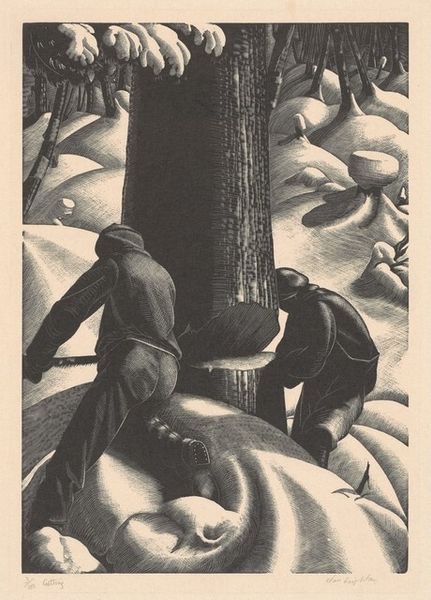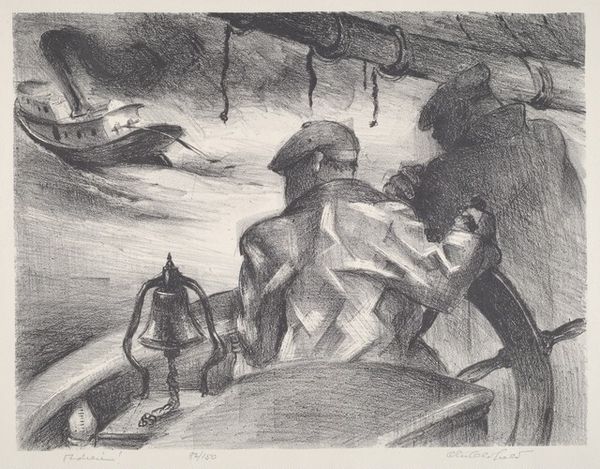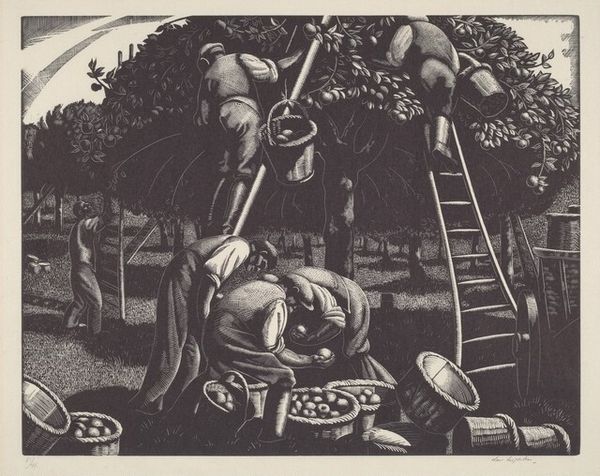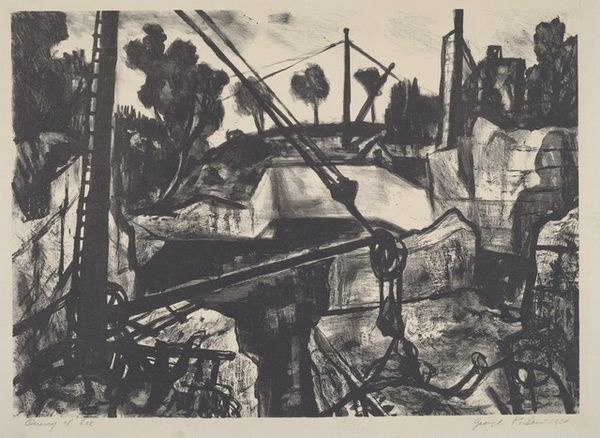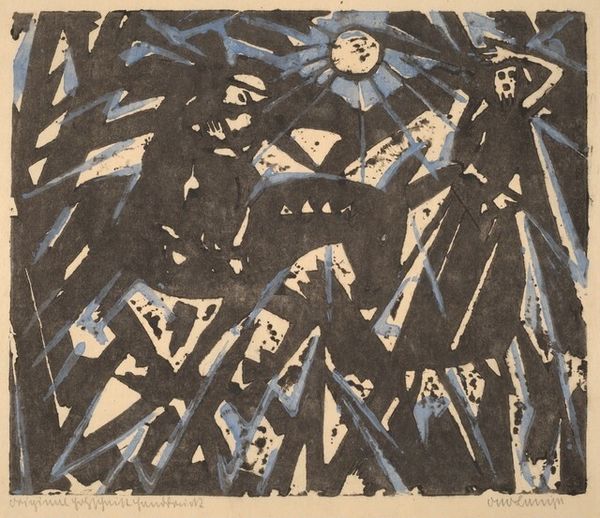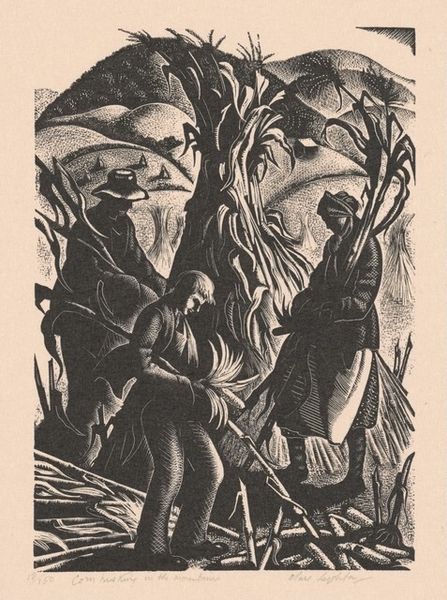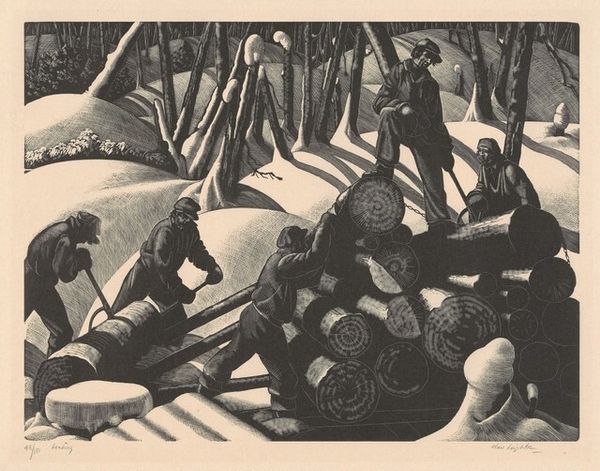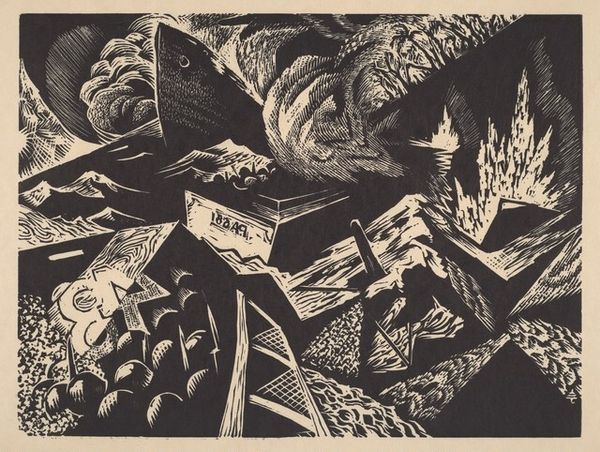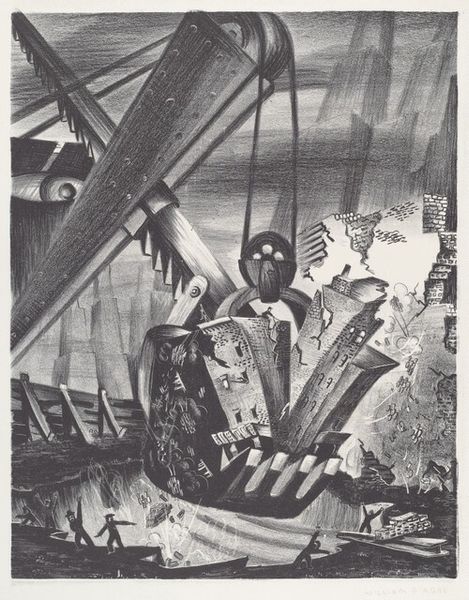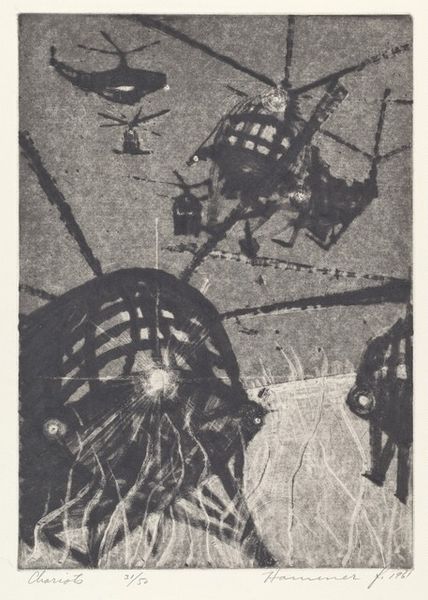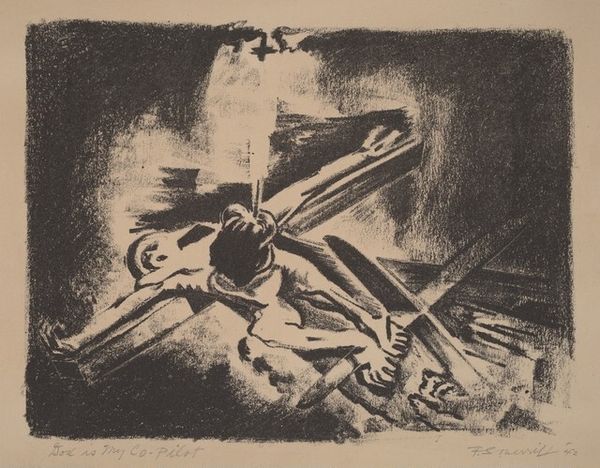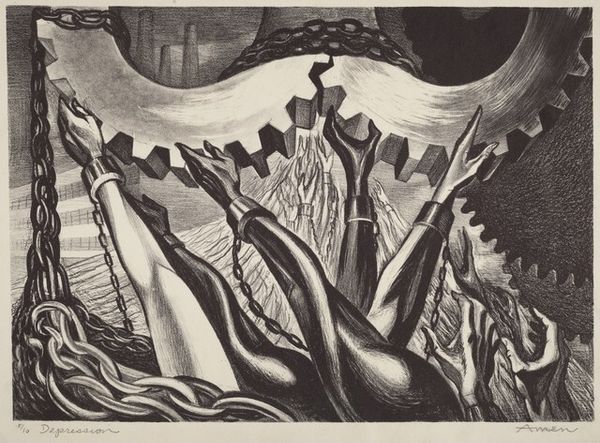
print, woodcut
# print
#
landscape
#
figuration
#
woodcut
#
line
#
realism
Dimensions: image: 20.3 × 25.1 cm (8 × 9 7/8 in.) sheet: 27.9 × 37.5 cm (11 × 14 3/4 in.)
Copyright: National Gallery of Art: CC0 1.0
Curator: Clare Leighton’s "Haymaking," created in 1932, offers a powerful look into rural labor during a period of immense social and economic upheaval. Executed as a woodcut print, it presents a scene of intense physical exertion and collaborative effort. Editor: It’s strikingly dramatic, isn’t it? Almost cinematic with that stark black and white contrast. I immediately think about sweat and the back-breaking rhythm of repetitive work, but also something timeless and communal. Like a dance captured in a split second. Curator: Indeed. Leighton was deeply invested in representing working-class lives and, in "Haymaking", we see that interest clearly manifested. Consider how the composition directs our gaze to the heft of the hay wagon overhead, emphasizing both the weight of labor and the ever-present possibility of risk and imbalance. The positioning subtly comments on the power dynamics inherent in agricultural work during the interwar period, especially given rising anxieties surrounding industrialized farming practices and displaced rural populations. Editor: You know, that elevated perspective gives me vertigo! It makes the whole scene feel precariously balanced, almost on the verge of tipping over. The figures feel grounded by their labor but they're almost dwarfed by the looming equipment above them. And I love the stylized lines, the textures created by the cuts in the wood, the rich tonality that somehow brings out the sun beating down. Curator: Leighton was profoundly influenced by the Arts and Crafts movement’s emphasis on skilled handcrafts and socially conscious art. "Haymaking" exemplifies her commitment to aesthetic and socio-political goals—linking the arduous nature of agricultural labor to broader questions about equity and human dignity in a changing world. I always read the upward gazes of some figures as embodying both fatigue and the search for something beyond their immediate, exhaustive realities. Editor: Absolutely, that gaze speaks volumes. Beyond just recording a scene, this is visceral. I get a sense that Leighton herself experienced some connection, either observed or participated, within that laborious activity. The choice to elevate that perspective really brings into view a feeling of what working at ground level beneath enormous agricultural equipment may feel like. Makes you realize how little distance is required for accidents. Thank you. Curator: Indeed, thank you. Through form and context, Leighton prompts ongoing reflection of the costs and commitments embedded in our agricultural practices and landscapes.
Comments
No comments
Be the first to comment and join the conversation on the ultimate creative platform.
